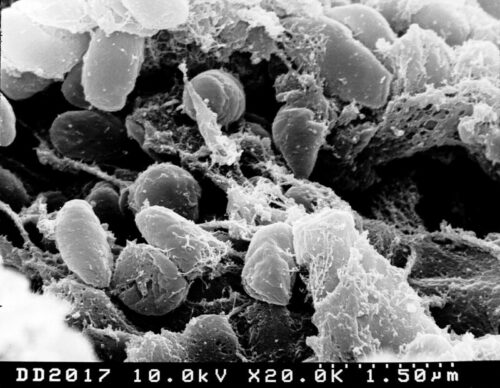Image Courtesy of Flickr.
Infectious diseases have propelled the evolution of humans and other species across the tree of life, and the Black Death was no exception. Yersinia pestis, the bacterium responsible for the bubonic plague and its associated twenty-five million deaths, is also responsible for a form of positive selection pressure experienced in humans. According to a study published in Nature, individual genetic variants that conferred protective immunity against Y. pestis might have been under strong selection during the fourteenth and fifteenth centuries.
Klunk & Vilgalys et al. identified genetic loci—specific locations or segments within the genome — associated with protection against Y. pestis. “The main motivation was to understand how a single pathogen, Yersinia pestis in this case, would have been able to impose a noticeable selective pressure to the human genome within a very short time window,” said Luis Barreiro, a population geneticist at the University of Chicago and one of the principal investigators of the study. In their study, the researchers examined individuals who died shortly before, during, or soon after the Black Death in London and across Denmark. In total, 516 samples were screened, and after quality control, the researchers found many samples lacking sufficient endogenous DNA content. They used a technique called hybridization capture, a method allowing targeted enrichment of specific genome regions to sequence the samples.
After collecting the samples, the researchers manually curated a list of targeted immune genes based on their roles as immune receptors. The researchers then searched for unexpectedly large changes in allele frequencies within these genes between pre- and post-Black Death samples to detect alleles that may have conferred protection from Y. pestis. A stringent criterion was used to identify specific loci for the strongest candidates of selection, leveraging the different time periods and populations in the dataset. They found the most compelling evidence near the gene ERAP2, which had some of the greatest differentiation before and after the Black Death and also affected the cellular response to infection with plague in vitro. The evidence shows that individuals homozygous for the protective allele were forty percent more likely to survive the Black Death than those homozygous for the harmful variant.
The results have many implications for the field of immunology. “It is important to understand why living people are susceptible to the diseases we are susceptible to,” said Tauras Vilgalys, an evolutionary and functional geneticist who co-led the project. “By showing that past populations had these selective pressures, along with evidence that shows how those genetic variants still affect health to this day, we can ultimately understand who we are and how we got here.”
Moreover, the breadth of the project spans various disciplines. “It is a very multidisciplinary project that involves anthropologists who know the history of Yersinia pestis and the Black Death, archeologists who have access to the samples and can date them through radiotyping, ancient DNA experts who can decode the degraded DNA, population geneticists like in my backgrounds, experts in genomics for genome sequencing, as well as cell biologists for laboratory testing,” Barreiro said. Without this collection of experts, this project would have never been able to move past an initial idea.
In the future, Vilgalys and Barreiro are keen on continuing this project. After encountering several limitations due to the small sample size, Barreiro hopes to include more individuals and try to expand the study to cover the entire genome. For now, the quest to understand adaptation during the Black Death has only just begun.

